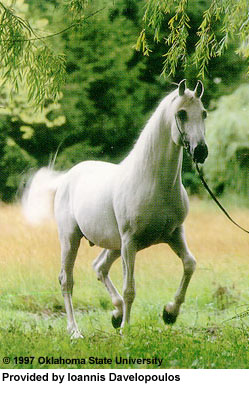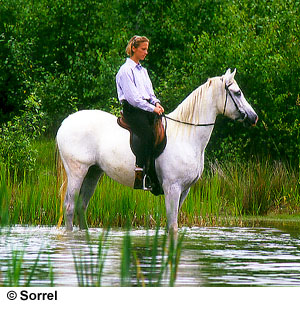

Shagya Arab


Introduction: If you have any comments or suggestions, please click here.
Names: Shagya, Shagya Arab. Named after the founding father of the breed, Shagya.
Origin: A
type of Arab from eastern Europe. Usually considered to be separate from
the Arabian
breed.
Shagyas were originally, and still are, bred at Babolna, one of the best
known and State-owned Hungarian studs, established in 1789.
The Empire of Equus gave a rather startling
introduction to this breed, calling it the "Hungarian Shagya" and making these
interesting observations: A primitive, hardy breed of small horses,
believed to have descended from the cross-breeding (in nature) of the South
Russian tarpan and Przewalsky's horse. later on, numerous Turkish
invasions of Hungary introduced into the native horses Arab, Persian, and
Turkish blood. The foundation sire of the present-day breed was an Arab
stallion named "Shagya," from which the breed is named. (Chew on that food
for thought!)
Breeding: Shagya, the foundation stallion, was a pure-bred, desert Arabian that was imported into Hungary and crossed with Oriental but non-pedigree mares.
Description: Except that Shagyas do not always have markedly concave profiles, they show all the Arabian characteristics of looks and temperament and are very beautiful.
Color: Usually gray.
Head: Small and fine.
Profile: Dished.
Size: 14-15 hands.
Tail: Carried high.
Temperament:
Features: Can live on little or poor food. Tireless.
Uses: Popular as a cavalry horse in World War I.
Accomplishments:
Curiosities:
Profiles: Shagya - Foundation stallion of the breed; see Breeding, above, for more information.
Conclusion: